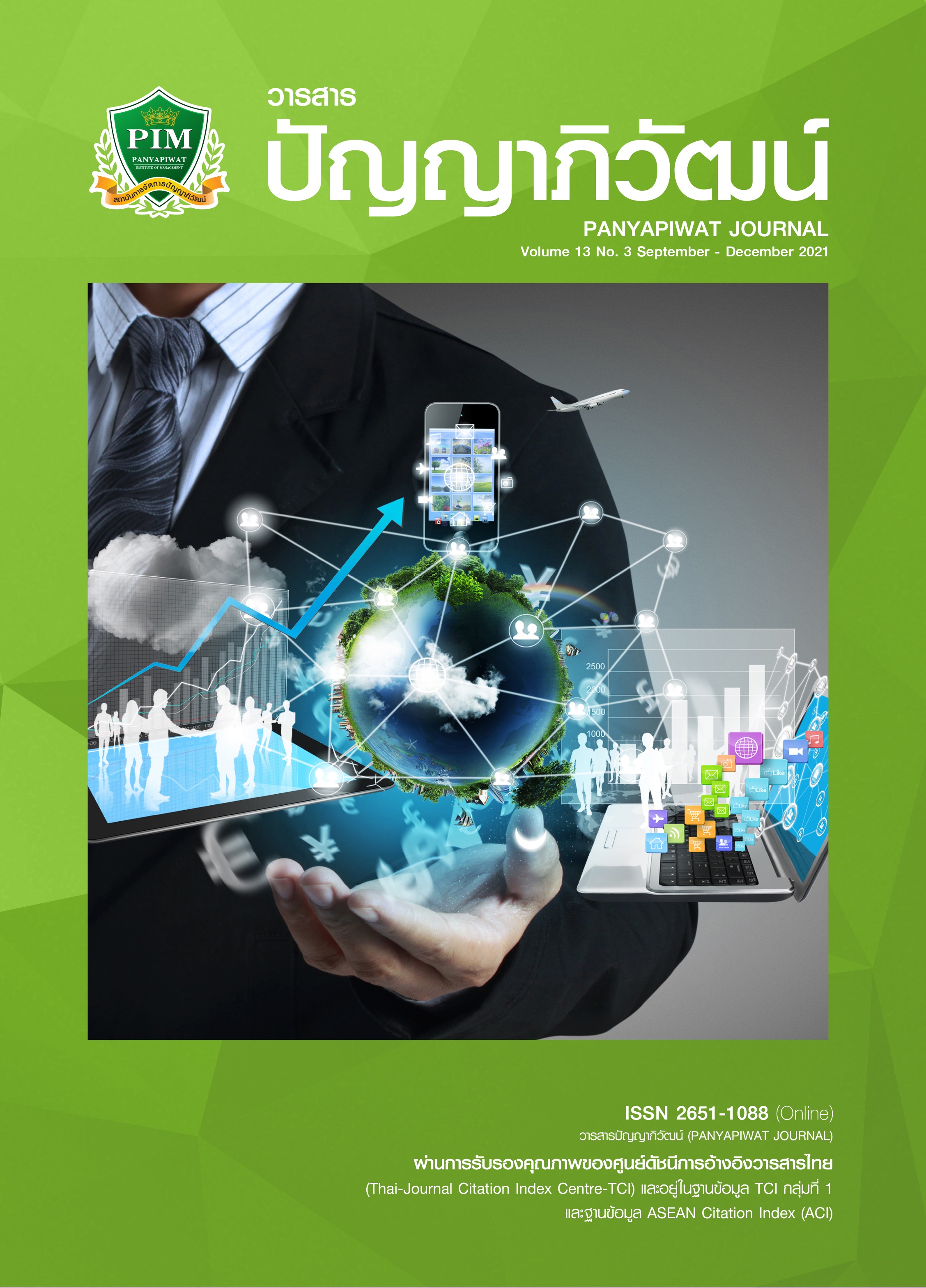DEVELOPING E-LEARNING LESSONS ALONGSIDE USING GOOGLE CLASSROOM APPLICATIONS ON THE COMPUTER ACT
Main Article Content
Abstract
The objectives of this research were (1) to develop and find the efficiency of e-learning lessons alongside using Google Classroom Applications on the topic of the Computer Act; (2) to compare learning achievements of the students before and after learning from e-learning lessons alongside using Google Classroom Applications on the topic of the Computer Act; and (3) to study the students’ satisfaction with e-learning lessons alongside using Google Classroom Applications on the topic of the Computer Act. The research sample consisted of 30 purposively selected first year students of a private higher education institution who enrolled in the SC60103 Course: Using Application Programs in Modern Organizations during the 2019 academic year. Research data were analyzed with the use of the E1/E2 efficiency index (E1 = 80 and E2 = 80), mean, standard deviation, paired samples t-test, and content analysis.
The results showed that (1) the developed e-learning lessons alongside using Google Classroom Applications on the topic of the Computer Act were efficient at 83.5/85.3, with quality at the good level ( = 4.28); (2) the post-learning achievement of the students was significantly higher than their pre-learning achievement at the .05 level of statistical significance; and (3) the students’ satisfaction with the e-learning lessons alongside using Google Classroom Applications on the topic of the Computer Act was at the good level (
= 4.03).
Article Details
I and co-author(s) certify that articles of this proposal had not yet been published and is not in the process of publication in journals or other published sources. I and co-author accept the rules of the manuscript consideration. Both agree that the editors have the right to consider and make recommendations to the appropriate source. With this rights offering articles that have been published to Panyapiwat Institute of Management. If there is a claim of copyright infringement on the part of the text or graphics that appear in the article. I and co-author(s) agree on sole responsibility.
References
Department of Science Service. (2015). What is Cloud Computing? Retrieved June 23, 2018, from http://lib3.dss.go.th knowledge/bsti-6-2558-cloud.pdf
Gartner. (2013). Gartner Says Worldwide Public Cloud Services Market to Total $131Billion. Retrieved June 23, 2018, from https://www.gartner.com/en/newsroom/press-releases/2017-02-22-gartner-says-worldwide- public-cloud-services-market-to-grow-18-percent-in-2017
Kongrugsa, N. (2014). Teaching Management and Cloud Computing 21st Century. Bangkok: Journal of Vocational and Technical Education King Mongkut’s University of Technology North Bangkok, 4(7), 52-59. [in Thai]
Kuder, G. & Richardson, M. W. (1937). The Theory of Estimation of Test Reliability. Retrieved May 19, 2018, from https://www.scirp.org/reference/ReferencesPapers.aspx?ReferenceID=1342881
Pinyoanantapong, B. (2012). Educational Measurement and Evaluation. Bangkok: Aksorn Charoen Tat.
Putong, P. (2017). Development of e-learning Program in Combination with Tools Activities in the Education Applications Group on the Topic of Excel Program for the First Year Students of Private Educational Institutions. Journal of Phetchaburi Rajabhat University, 11(1), 104-114. [in Thai]
Fakkao, S. (2020). Teacher as Instructional Designer in 21st Century. Panyapiwat Journal, 12(2), 302-314. [in Thai]
Salem, A. (2017). Apply of e-Learning in the Teaching Process Minburi Bangkok Business Administration Technological College. Master’s thesis, Mahanakorn University of Technology.
Saiyot, L. & Saiyot, A. (1995). Educational Research Techniques. Bangkok: Suwiriyasarn.
Sangkhawadee, R. (2017). The Development of e-learning with Activities on Facebook in the Ways of Living in the Digital Course: The Ethics of Living in the Ways of Living in the Digital Age Bachelor Degree Students Naresuan University. Journal of Education Naresuan University, 19(3), 133-145. [in Thai]


